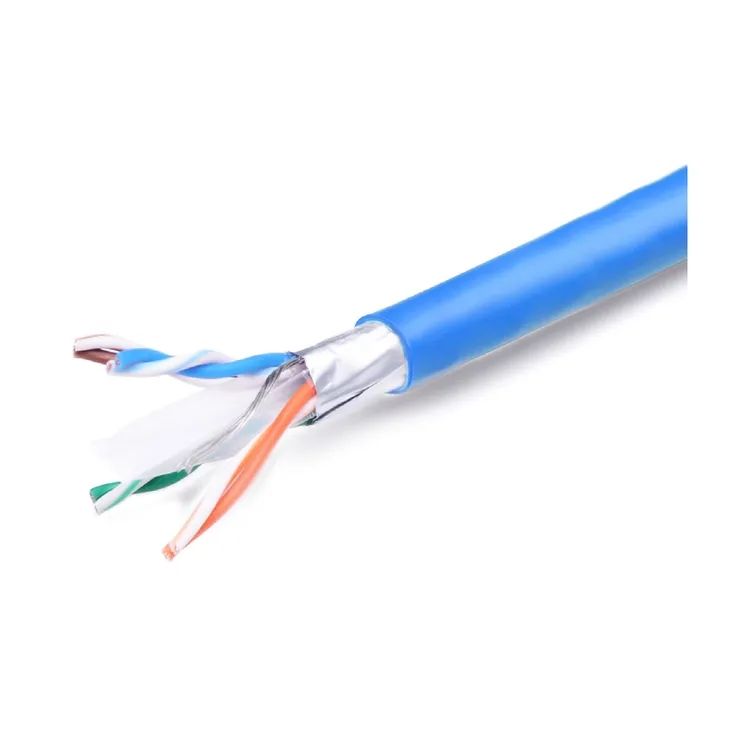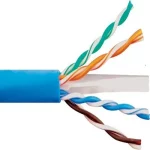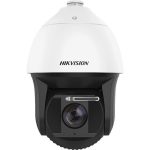Shielded vs Unshielded Cat6 cable
As businesses and individuals continue to rely on fast and reliable internet connectivity, choosing the right Ethernet cable becomes increasingly important. Two popular options are shielded and unshielded Category 6 (Cat6) cables. In this article, we’ll explore the differences between these two cable types, and provide guidance on how to choose the best option for your needs.
What is Cat6 Cable? Cat6 cable is a twisted pair cable that is designed to support data transmission speeds of up to 10 gigabits per second (Gbps) over a distance of up to 100 meters. It is widely used in both residential and commercial applications, and is often used to connect devices such as computers, servers, and routers to the internet.
Shielded vs. Unshielded Cat6 Cable: What’s the Difference? The main difference between shielded and unshielded Cat6 cables is the way they are constructed. Shielded cables are surrounded by a metallic shield that helps to reduce electromagnetic interference (EMI) and radio frequency interference (RFI), while unshielded cables do not have this shielding.
Shielded Cat6 Cable:
Shielded Cat6 cable is typically more expensive than unshielded Cat6 cable, but it offers superior protection against EMI and RFI. This is because the metallic shield provides a barrier that helps to prevent interference from external sources, such as other cables, electrical equipment, and even wireless signals.
One of the key benefits of shielded Cat6 cable is that it can help to improve signal quality and reduce errors. This is particularly important in high-traffic areas or in environments where there is a lot of electrical noise, as interference can lead to signal degradation and slow down data transmission speeds.
Another advantage of shielded Cat6 cable is that it is more durable and resistant to damage than unshielded cable. The metallic shield helps to protect the cable from physical damage and can help to extend the cable’s lifespan.
However, shielded Cat6 cable also has some drawbacks. For example, it can be more difficult to install, as the metallic shield can make the cable thicker and less flexible. It can also be more difficult to terminate and connect, as the shield needs to be properly grounded in order to function effectively.
Unshielded Cat6 Cable:
Unshielded Cat6 cable, also known as UTP (unshielded twisted pair) cable, is a more basic type of Ethernet cable that does not have a metallic shield. While this makes it less expensive and easier to install than shielded Cat6 cable, it also means that it is more susceptible to EMI and RFI.
Despite these limitations, unshielded Cat6 cable is still a popular choice for many applications. It is widely used in residential and small business settings, where there is less electrical noise and interference. It is also a good option for short cable runs, where the risk of interference is lower.
How to Choose Between Shielded and Unshielded Cat6 Cable:
The environment: If you are installing cables in an environment where there is a lot of electrical noise, such as near electrical equipment or in a high-traffic area, shielded Cat6 cable may be the better choice. However, if the environment is relatively quiet, unshielded Cat6 cable may be sufficient.
The cost: Shielded Cat6 cable is typically more expensive than unshielded cable, so you will need to consider your budget when making a decision.
The length of the cable run: Shielded Cat6 cable is better suited for longer cable runs, as it can help to maintain signal quality over longer distances. For shorter cable runs, unshielded Cat6 cable may be sufficient.
The type of devices being connected: If you are connecting devices that are particularly sensitive to EMI and RFI, such as high-end servers or medical equipment, shielded Cat6 cable may be the better choice. However, for more basic applications, unshielded Cat6 cable may be sufficient.
Installation requirements: Shielded Cat6 cable can be more difficult to install, terminate, and connect due to the added metallic shield. If you are not experienced with working with Ethernet cables, unshielded Cat6 cable may be the better choice.
Ultimately, the decision to choose shielded or unshielded Cat6 cable will depend on your specific needs and the environment in which the cable will be installed. In many cases, a combination of both types may be used, with shielded cable being used in high-traffic areas and unshielded cable being used in quieter areas.
Summary
In summary, Cat6 cable is an important tool for anyone looking to connect devices to the internet. Shielded Cat6 cable is the better choice for environments where there is a lot of electrical noise and interference, as it can help to maintain signal quality and reduce errors. However, it is also more expensive and can be more difficult to install. Unshielded Cat6 cable is a more basic type of Ethernet cable that is less expensive and easier to install, but it is also more susceptible to interference. When choosing between shielded and unshielded Cat6 cable, it is important to consider your specific needs and the environment in which the cable will be installed.





